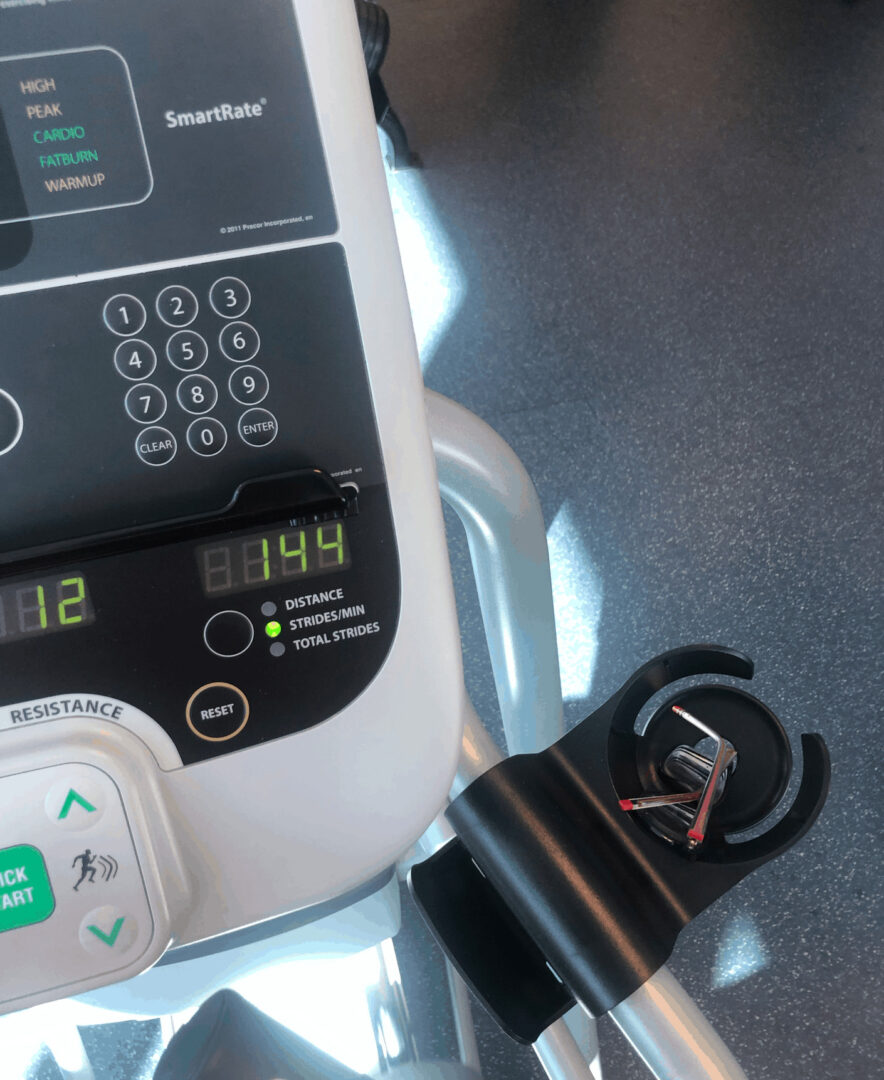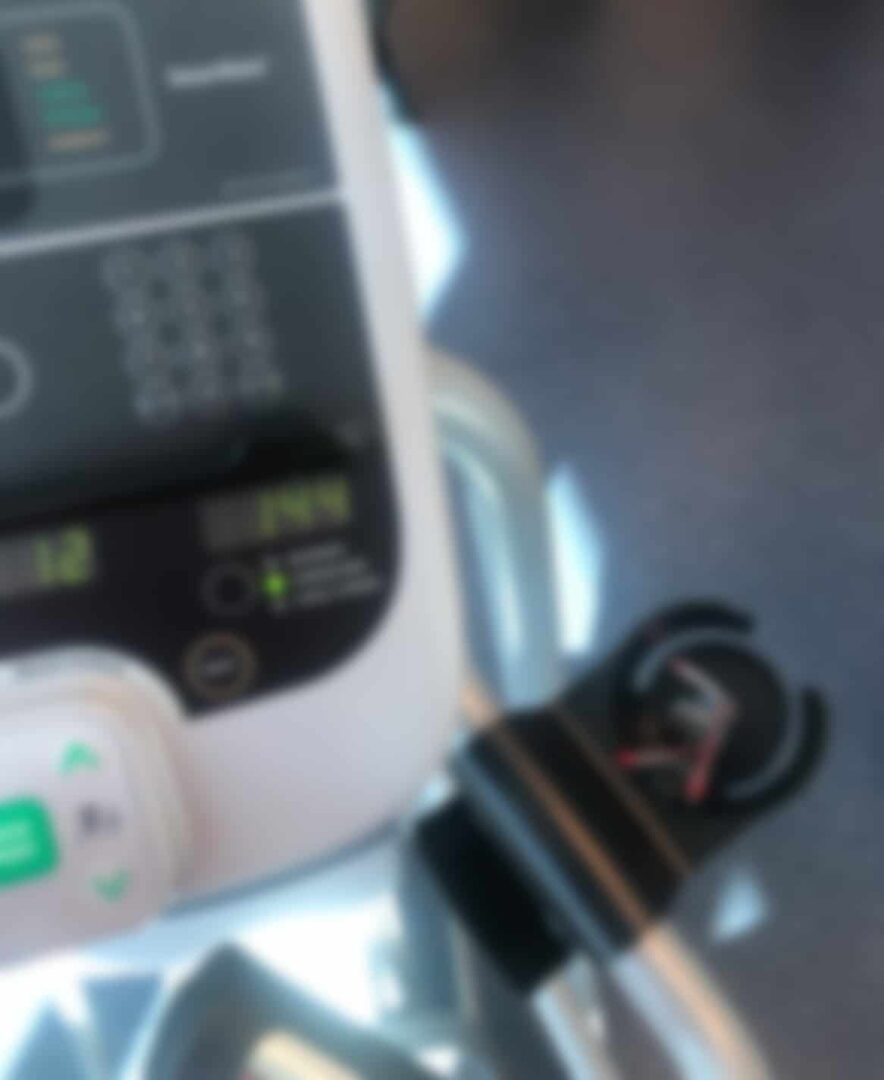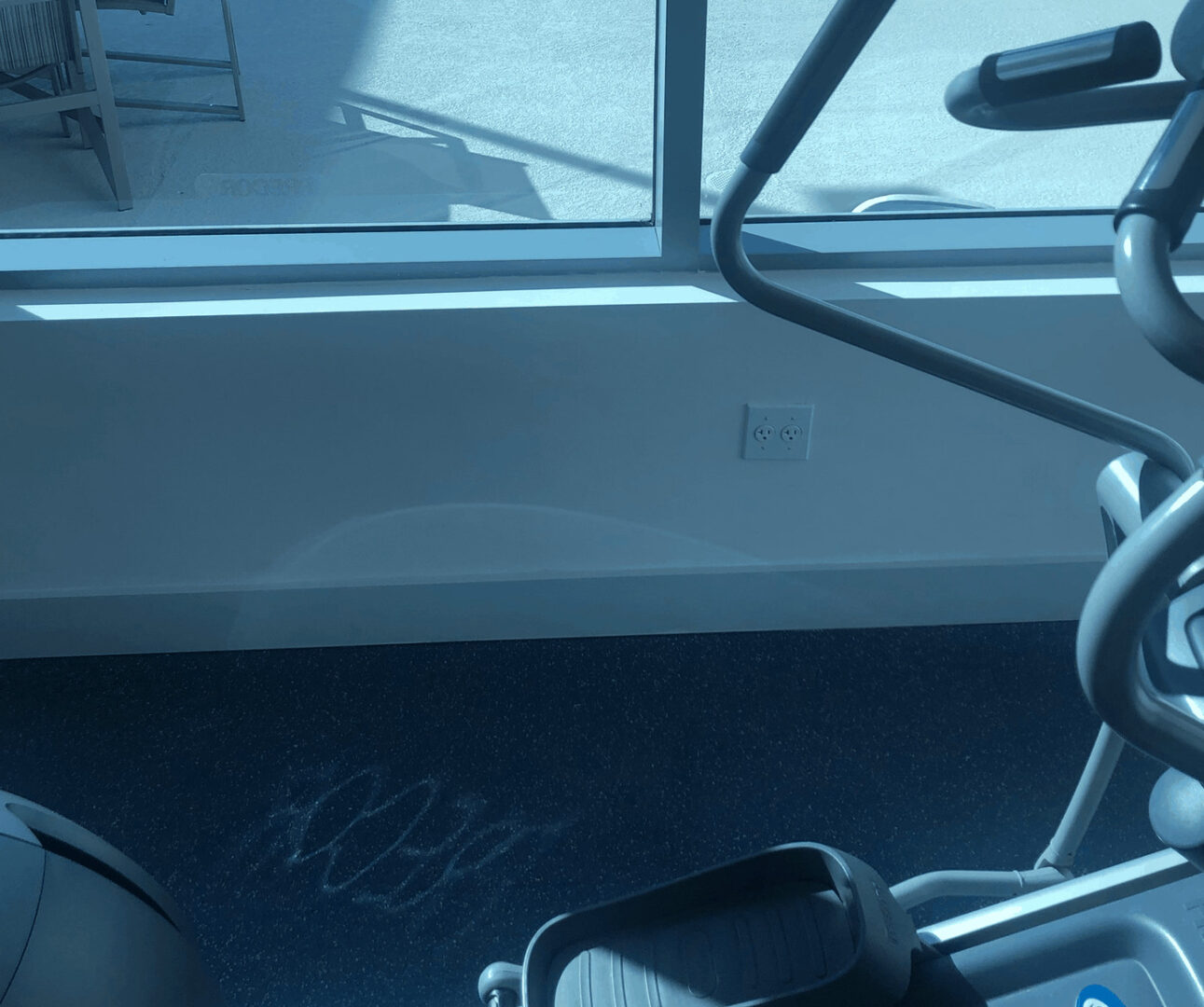I like to exercise, and it's important to me and my health. I've never been a runner (bad knees), so I prefer using an elliptical machine. I've found that I work out more intensely when I use an iPhone app called Aaptiv that provides not only music, but also some energetic trainers (as I wrote about in this comment recently).
I tend to keep my iPhone on the shelf. But, sitting there means that I'm tempted to sometimes look at it. It's tempting to check email or social media especially if I'm working out as a break during a home office day. But, looking at my phone means:
- I'm not exercising as intensely
- I don't hear what the trainer says about adjusting the resistance, which means I have to rewind 15 seconds (which does extend the workout, LOL)
- There's probably more risk of me falling since my hands aren't on the moving handles
So, in the spirit of Kaizen, I'm motivated to solve this problem. I've identified a need. I can then come up with a countermeasure to test.
When we have ideas, we really don't know if it's a “good idea” (or an “effective countermeasure”) until we try it and see. Sometimes a “bad idea” turns out to be a good one when we test it (although we certainly wouldn't go test an idea that seems dangerous or would have other obvious ill effects).
I wear glasses and sometimes it's uncomfortable when they get sweaty (that does mean I'm getting in a good workout). I do need my glasses to read my iPhone. I don't really need to wear glasses to exercise.
So, my Kaizen countermeasure to test was putting my glasses in the water bottle holder (sure, I should probably have water). There are other places I could put the glasses so they are safe.
Putting them there, looks like this:

With my bad eyesight, it looks more like the photo below, which also illustrates how I can still read the big green numbers on the elliptical without my glasses.

So, I tried this that out to see if it worked.
I was still tempted by the iPhone a few times (which meant I was holding it up closer to my face). Ugh.
You might be tempted to say, “Mark, you need more self control.” Sure… but saying that doesn't really help. I already know I should stop multitasking here.
What's probably more effective is thinking more about my motivations for not looking at the iPhone while exercising (thinking of the whys more than the what, as I blogged about the other day).
WHAT: Stop being distracted by the iPhone
WHY: I need to exercise more intensely and without distraction. I'm going to do it because it's safer.
I need to focus… pun intended.
Since I use Apple AirPods to get the audio from the iPhone to my ears. there's no reason for me to have the iPhone within arm's reach.
The countermeasure I'm going to try next is to set the iPhone a few feet away, like on this ledge by the window:

I'll try this and I'll report on how it goes in a comment, below. I can decide if I want to take my glasses off or leave them on.
Anyway, I hope this illustrates some of the thought process of starting a Kaizen culture with small improvements that matter to the individual. Starting small makes change less scary. Over time, we can build confidence and capability in our ability to take on bigger, more complicated problems.
Start with baby steps. Test and evaluate your ideas. Use the mindset of Plan-Do-Study-Adjust (PDSA). That's what I did here. You don't need to come up with the perfect countermeasure your first time. Making things a little better is more practical than “solving” a problem.
What do you think? What do you see work well with Kaizen in your workplace? How can you improve your Kaizen approach? Why would you improve the way you improve?
Please scroll down (or click) to post a comment. Connect with me on LinkedIn.
Let’s work together to build a culture of continuous improvement and psychological safety. If you're a leader looking to create lasting change—not just projects—I help organizations:
- Engage people at all levels in sustainable improvement
- Shift from fear of mistakes to learning from them
- Apply Lean thinking in practical, people-centered ways
Interested in coaching or a keynote talk? Let’s start a conversation.










I worked out with the phone sitting on that ledge…worked great. I like that approach…
Very interesting approach to a workout, I think that distractions are always a challenge, while the phone provides instruction, and music that motivates you, it will also sidetrack you. I think the leaving it within reach of your AirPods makes sense. This could be related into an office setting with people who enjoy listening to podcasts or music at work. If they see their phone they will be tempted to check it. Solution; use a music streaming app on your desktop and put your phone in your desk, similar to putting it on the ledge.